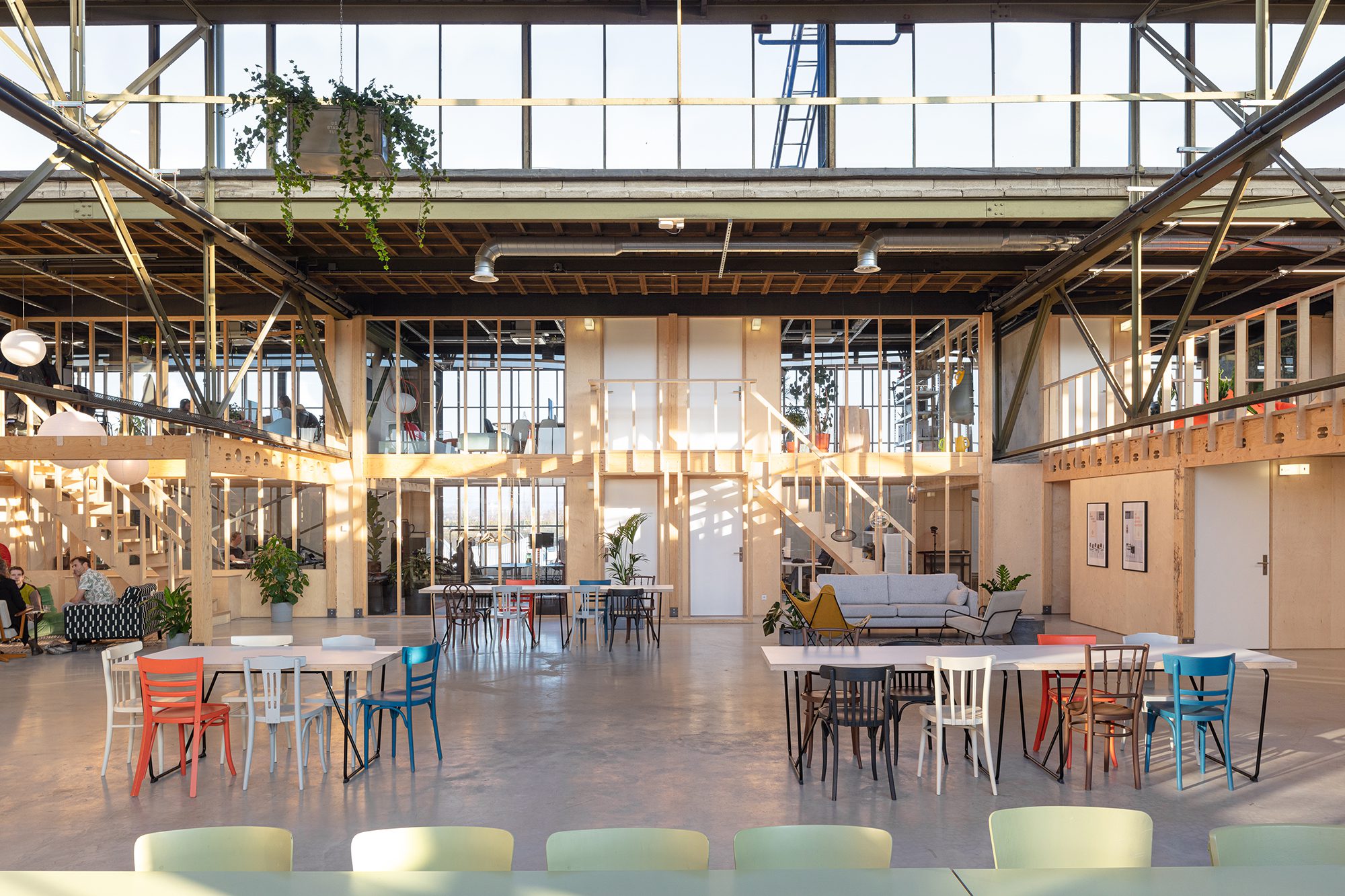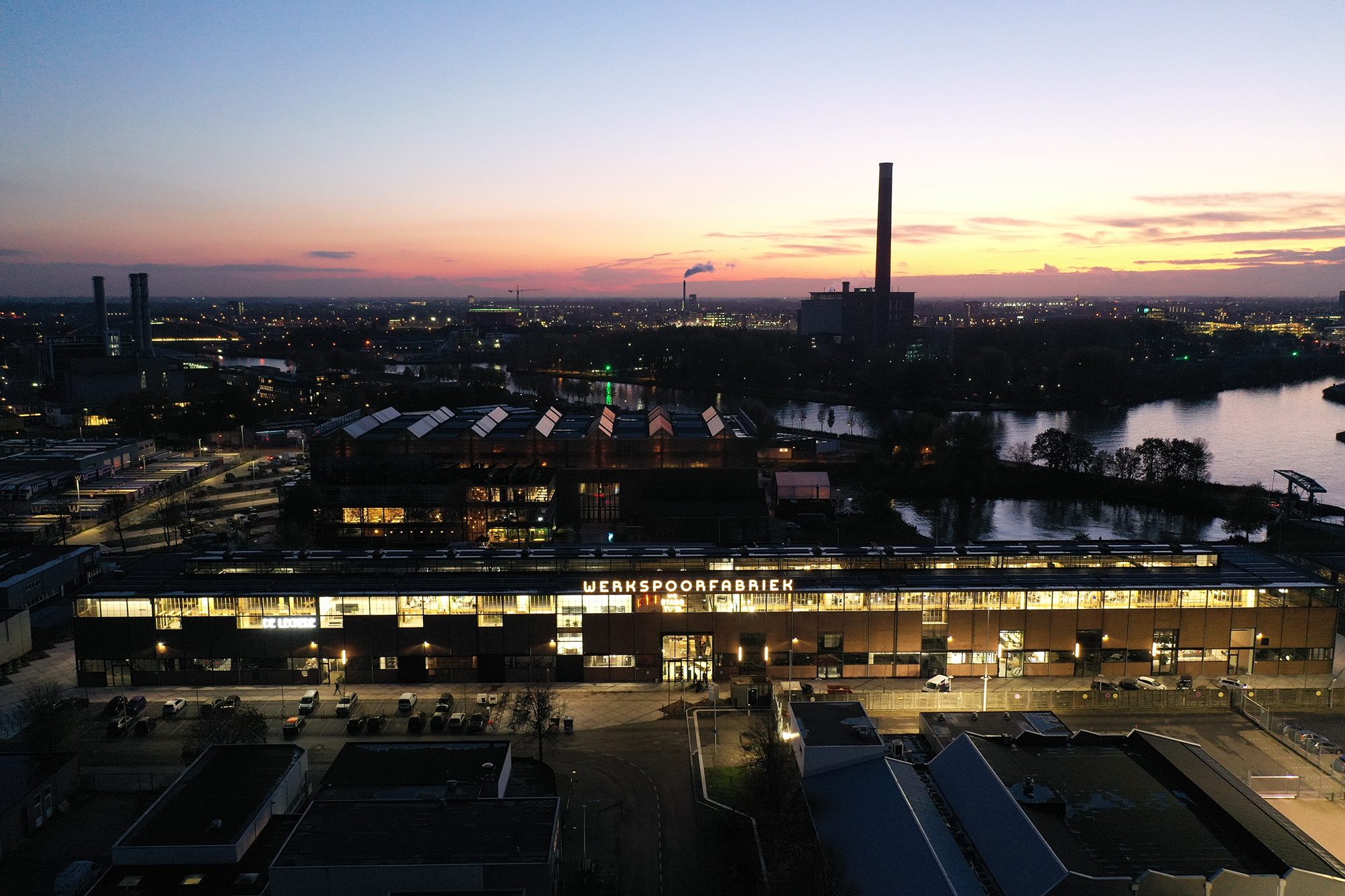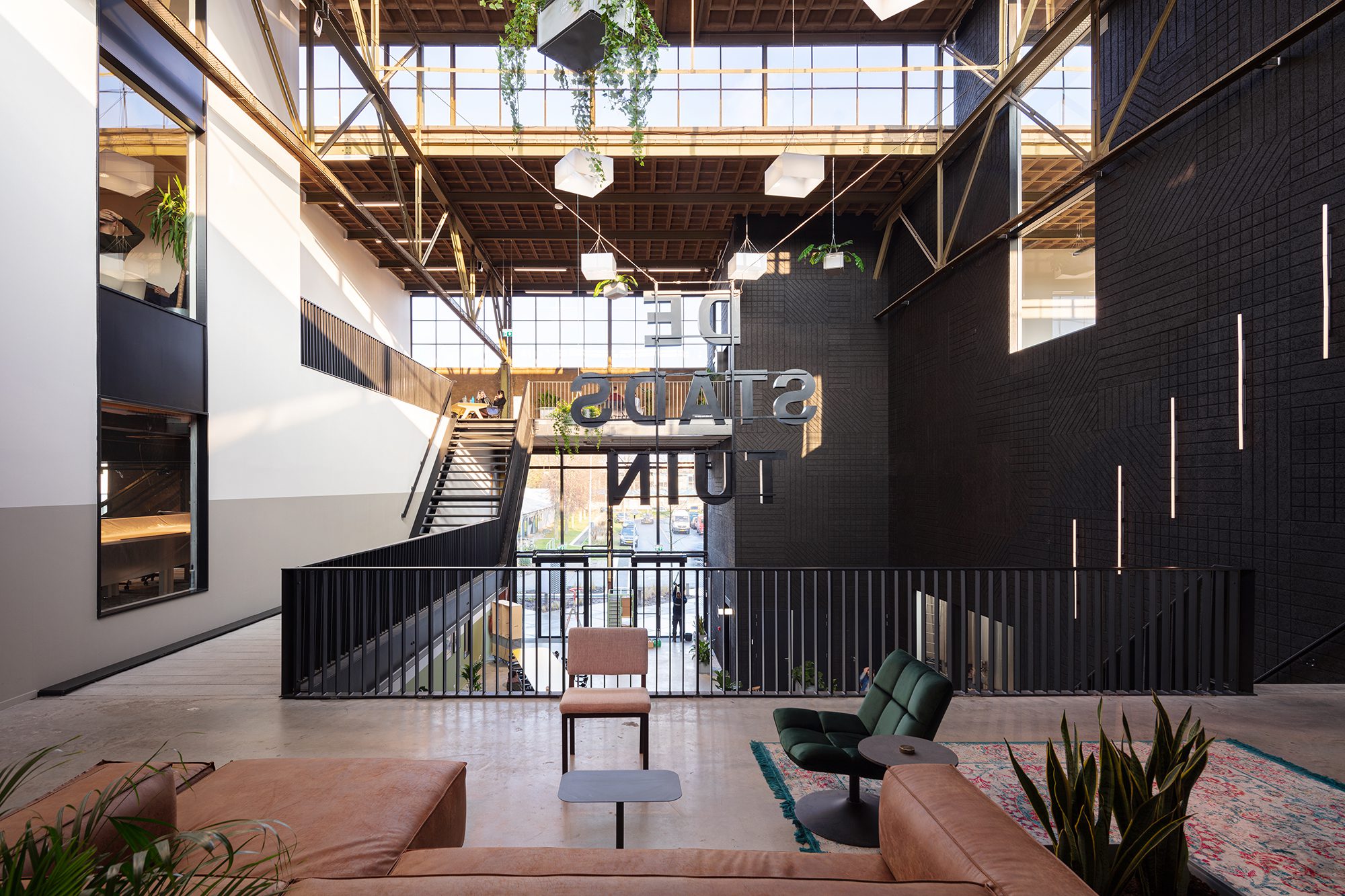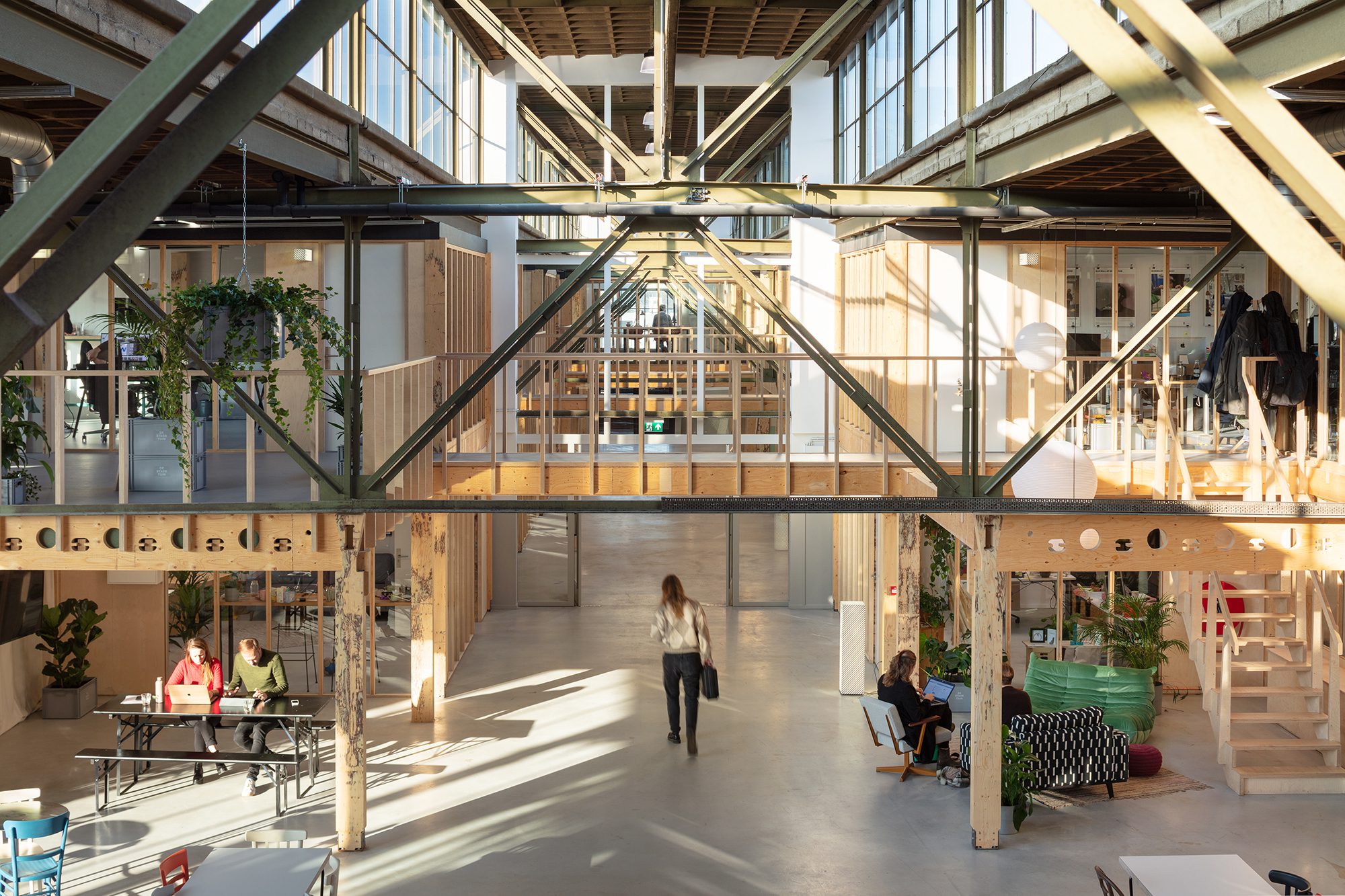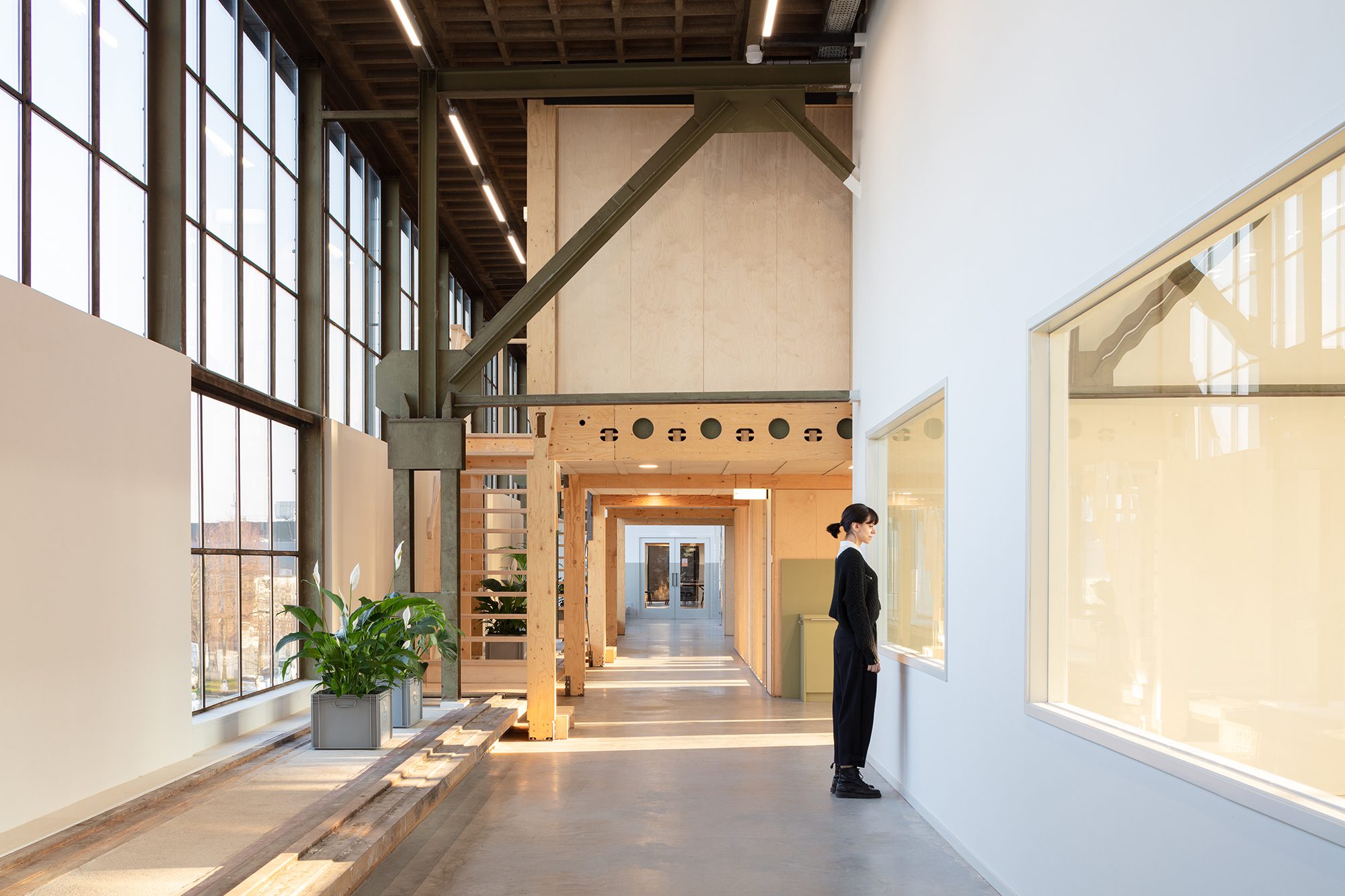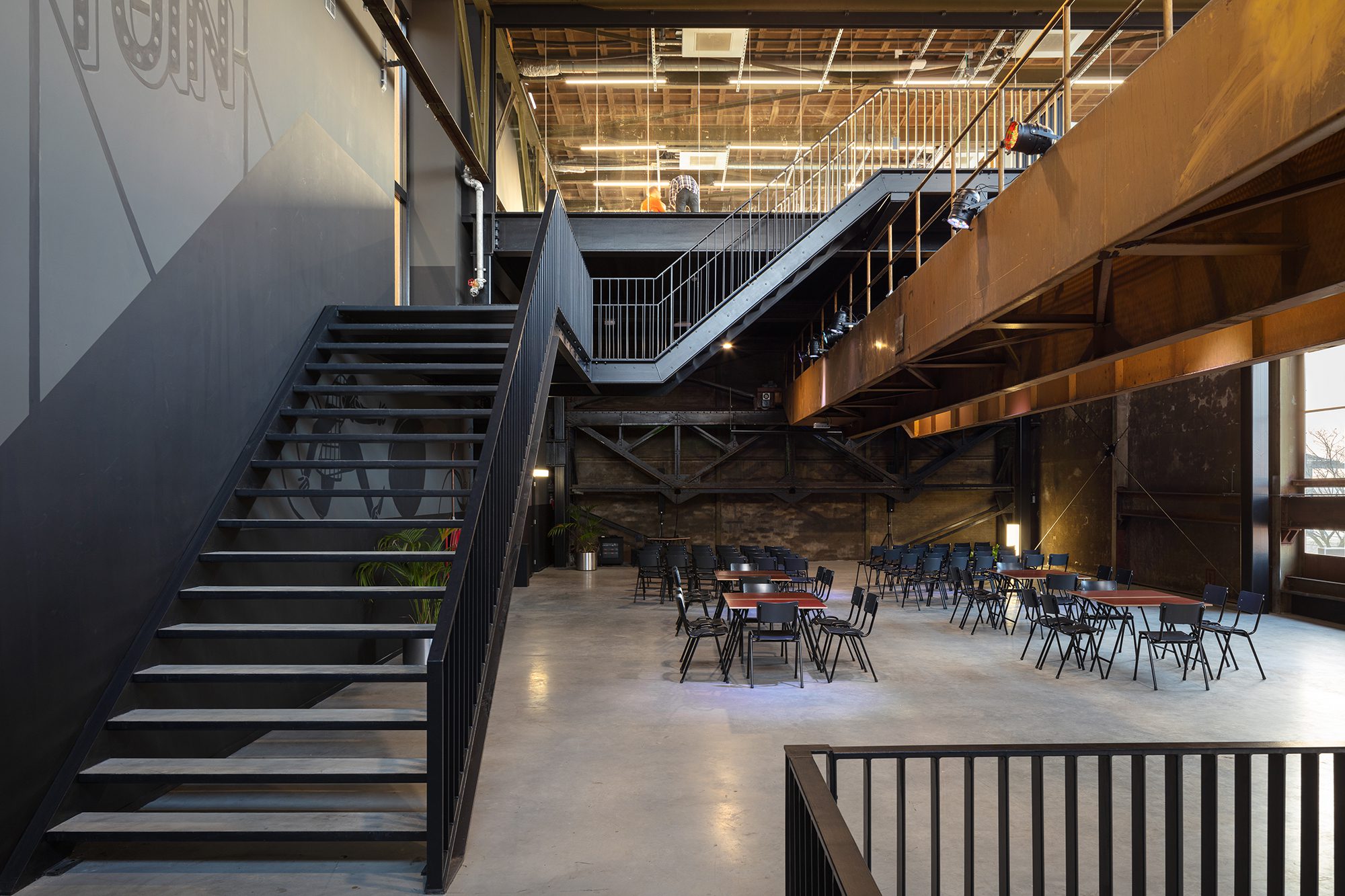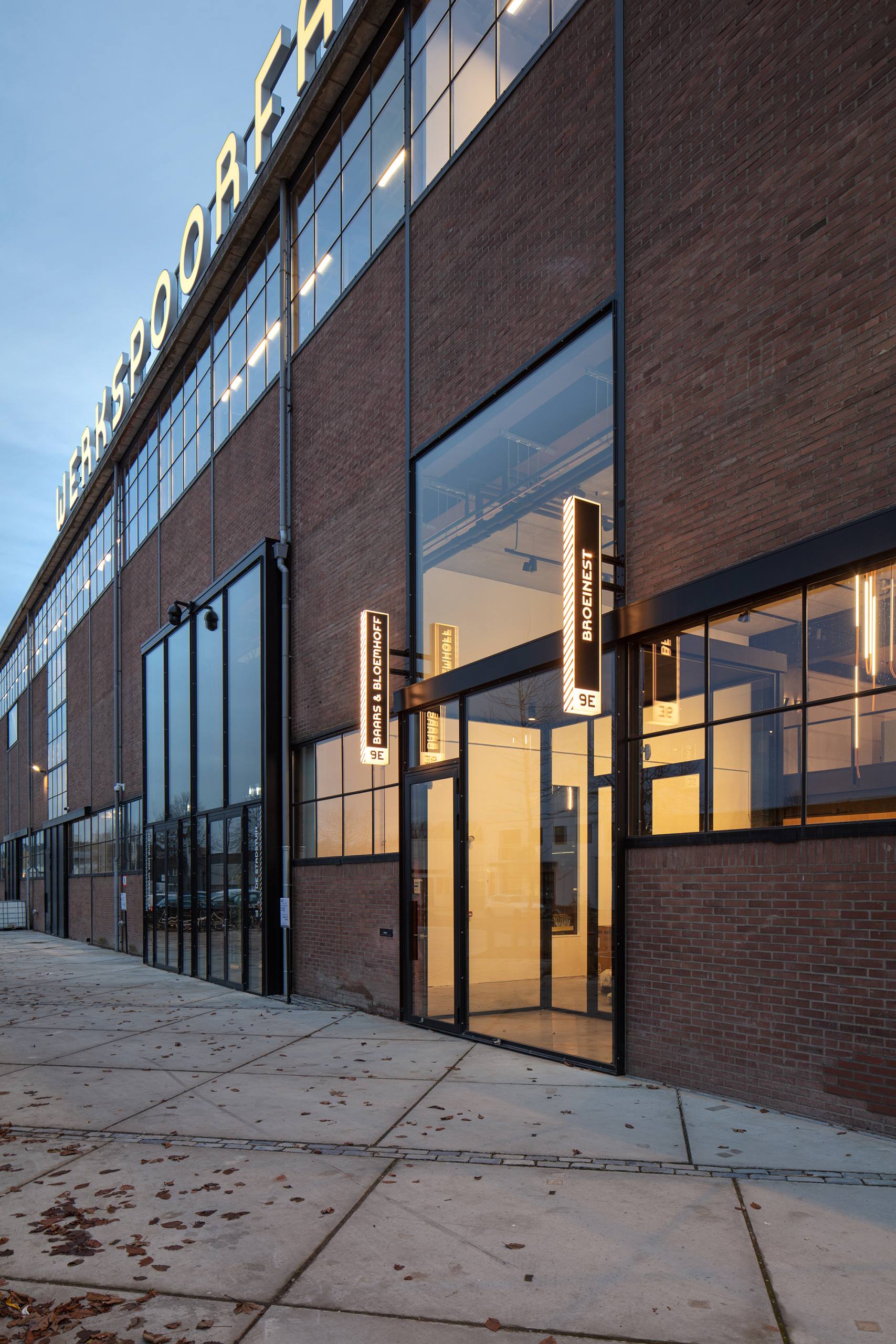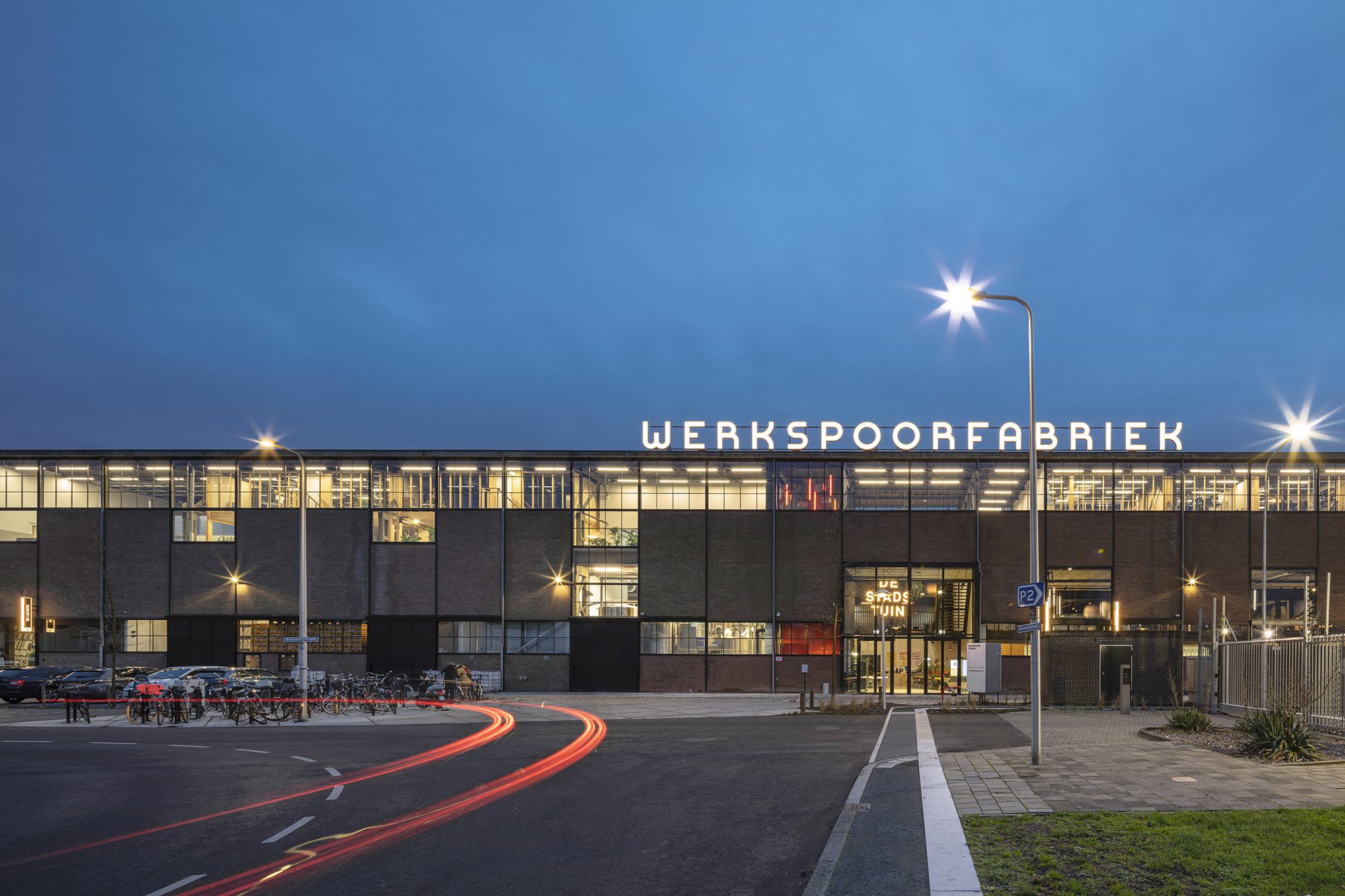Werkspoor Factory/
Zecc Architecten
Project Details

Location(City/Country):
Utrecht / Netherlands
Tipology:
Mixed-Use
Year (Design/Construction):
2016 / 2019
Area (Net/Gross):
9200 m2 / -
Operational Carbon emissions (B6) kgCO2e/m2/y:
-
Embodied Carbon emissions (A1-A3) kgCO2e/m2:
-- Preservation of a very large typical industrial warehouse in an area where may other buildings have been demolished. It’s a catalyst of the area and a symbol for circular development.
- Mix of uses where the people can work, think, learn, and manufacture. Flexible design to allow for wide range of spaces, private and shared. It contributes to the activation of the area previously abandoned.
- The main structure and façade are preserved. New openings on the façade are created to make the building more accessible and to activate the area around it, and also increase the daylight in where required.
- The open floors are filled with flexible and modular units. The system ‘Respace’ is 100% circular and is assembled without screw and/or glue connections.
- The existing building was insulated to reduce the energy demand.
- The roof was filled with PV panels to provide renewable energy to the building.
The Werkspoor District in Utrecht houses an immense industrial warehouse with a length of 175 metres. Together with several other buildings, the factory is part of the old Werkspoor. Large-scale steel constructions were processed here for civil engineering. Most of the buildings have meanwhile been demolished, but together with the Werkspoorkathedraal, the building acts as a catalyst of the area and it is a symbol for circular area development. In 2018 the Werkspoor District won the ABN AMRO Circular Economy Award. The Werkspoor Factory is not a monument, but a highly typical, large-scale example of industrial heritage. The client accepted the challenge to preserve the building and to activate it with a wide range of work-related functions. The Werkspoor Factory is part of an ensemble of existing buildings and the ‘Hof van Cartesius’, a circular breeding ground. It is a unique location for Utrecht where past and present are linked together in an inspiring fashion.
Functions
The Werkspoor Factory houses a range of businesses from creative independent entrepreneurs to the large beer brewery De Leckere. Together, the businesses form a community in the creative sector and the manufacturing industry. Hospitality is available, as well as event space to stimulate meetings of various businesses that focus on the learning process of manufacturing. Examples are the training centre of Baars & Bloemhoff and Parts On Demand, where innovation takes place in the area of 3D printing. These businesses are established on the ground floor and all have their own new industrial entrance. These areas have a double height and were provided with a mezzanine floor. De Stadstuin is present on the 2nd and 3rd floor.
This organisation activates the community and leases space to smaller and medium-sized creative businesses. At the head of the building a large multifunctional space was created for various purposes: parties, lectures, workshops and meetings with a fantastic view of the Amsterdam Rhine Canal. This space enables broad public use of the building and showcases the roughness of the Werkspoor past. The old crane track was preserved, and the smell of the past is still present. There are various new façade openings in the existing façades for the benefit of the new functions. They open up the building and contribute to the lively synergy between indoors and outdoors. The most important objective is the activation of the area, the building and the people who work, think, learn and manufacture here together. Space was even found for a small museum that narrates the history of Werkspoor and Zuilen, the neighbouring working class district.
Concept
The idea was to create a new structure within the free industrial space of 175x25x15 metres where businesses of various scopes and with various activities can establish themselves. Without prejudicing the industrial character, views and the length effect. In order to achieve this high level of ambition, ample surface area was added locally whilst at other locations as much spaciousness as possible was preserved. From large entrance areas to small units, always alternating in terms of perception and view. The whole forms a large inspiring journey of discovery for users and visitors. It is a factory of several businesses, spaciously and visually connected with each other. At the central entrance, the complete height of the warehouse can be seen, as well as two staircases that take you upstairs. The signature skylight and continuing steel window frames were restored and equipped with insulating glass. The idea is that with the interventions in the façades and the added new structure of open floors, it is possible to anticipate a changing demand in the future.
Façades
Several new façade openings were created where it was important that the character would not be lost. Several new entrances were created to make the building accessible and to activate it. Two at the head and a main entrance in the middle. Moreover, various entrances for businesses on the ground floor were created in the long façade. The central entrance offers access to the businesses on the 2nd and 3rd floor. The new windows on the 2nd floor, which offer panorama and daylight, were enshrined in the plane of the masonry and have thus become part of the volume. The entrances, on the other hand, are “lying on” the façade so that they are also recognisable in the longitudinal direction. These entrances were created as large industrial sliding doors with a wicket door inside. The main entrance protrudes slightly more and is also higher than the ancillary entrances. As a result, a clear hierarchy is created in the façade. Through shape and position it is clear what the existing and new façade openings are, and a clear historically layered structure is created.
Photography: Stijn Poelstra and Zeec Architecten
